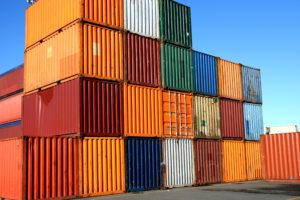While complete shipping recovery is still months away, by all indications the industry is moving in a more positive direction: rates are easing, congestion is lessening, turn times are getting quicker and chassis/containers are being restocked. Here is a summary of reports we’re reading and what we’re hearing related to fourth quarter freight forwarding trends.
PORT CONGESTION: Shipping demand is predicted to ease through the fourth quarter. Simply said peak season came early, in May and June, as shippers worked ahead of congestion.
We all remember those record number of ships waiting to berth at LA/Long Beach. The last week of September at Long Beach, seven ships ported, two went direct to berth and the others had a dwell time of about two days.
The CEO and president of the Port of Vancouver told the JOC.com he sees signs of easing. Dwelling container ships were down to just three recently compared to 30 ships last spring. Rail dwell times in Canada appear to be easing too. Last December, dwells were over just 8 days following floods in British Columbia. In August, dwells were at five days. And truck turn-times are coming in at 40 minutes.
BLANK SAILINGS: For the two weeks starting Oct. 3, a total of about 40 scheduled sailings to the U.S. West Coast from Asia and 21 sailings to the East Coast from Asia have been scrapped, according to the data companies as well as customer advisories viewed by The Wall Street Journal. Typically at this time of year, an average of two to four sailings a week are blanked.

CONTAINERS: The availability of shipping containers is sufficient to meet global demand from equipment lessors and ocean carriers this year, and supply is likely to remain adequate through mid-2023 due to slowing growth in volumes and reduced supply chain bottlenecks, maritime analysts Drewry report. Container manufacturers produced 6.6 million TEU in 2021.
